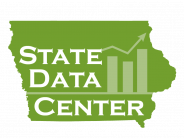Poverty Statistics, Thresholds, and Guidelines
The Census Bureau produces poverty estimates for states, counties, and school districts every year.
Authority
The official measure of poverty was established by the Office of Management and Budget (OMB) to be used by federal agencies in their statistical work.
-
- Official poverty data come from the Census Bureau's Current Population Survey (CPS) Annual Social and Economic Supplement (ASEC), formerly called the Annual Demographic Supplement or simply the "March Supplement."
- Government aid programs do not have to use the official poverty measure as eligibility criteria.
- Many government aid programs use a different poverty measure, the Department of Health and Human Services (HHS) poverty guidelines, or variants thereof
- Each aid program may define eligibility differently
Poverty Thresholds
The Census Bureau uses a set of money income thresholds that vary by family size and composition to determine who is in poverty.
- If a family’s total income is less than the family’s threshold, then that family and every individual in it is considered in poverty.
- The official poverty thresholds do not vary geographically, but they are updated for inflation using Consumer Price Index (CPI-U).
- The official poverty definition uses money income before taxes and does not include capital gains or noncash benefits (such as public housing, Medicaid, and food stamps).
Persons for Whom Poverty Status is Determined
The Census Bureau determines poverty status for all persons except:
- Institutionalized persons
- Persons in military group quarters
- Persons in college dormitories
- Unrelated individuals under 15 years old
These groups are also excluded from the denominator when calculating poverty rates.
Coverage
State-level poverty rates are derived by the Census Bureau from the Current Population Survey. The Census Bureau also produces state, county, and school district poverty estimates based on models based on the CPS, the decennial census, and administrative records. The models are the only source for sub-state poverty estimates between decennial censuses.
State Poverty Rates
- CPS rates are reported as:
- Three-year averages, the statistics the Census Bureau recommends for making state-to-state comparisons
- Two-year moving averages, the statistic the Census Bureau recommends for evaluating changes in state poverty rates over time.
- Model-based rates are reported for:
- Children under age 5
- Related children ages 5 to 17 in families in poverty
- Children under age 18 in poverty
- All people in poverty
- Median household income
County Poverty Rates
- Model-based rates are reported for:
- Related children ages 5 to17 in families in poverty
- Children under age 18 in poverty
- All people in poverty
- Median household income
School District Poverty Rates
- Model-based rates are reported for:
- Total population
- Children ages 5 to 17
- Related children ages 5 to 17 in families in poverty
Poverty Guidelines
Poverty guidelines by the U.S. Department of Health and Human Services every year. The guidelines are a simplification of the poverty thresholds for use for administrative purposes, for instance, determining financial eligibility for certain federal programs.
More Information
For information about the Census Bureau's state poverty thresholds and poverty statistics, see:
For information about the Census Bureau's small area (county and school district) poverty estimates, see:
For information about poverty guidelines see the U.S. Department of Health and Human Services poverty guidelines see:
